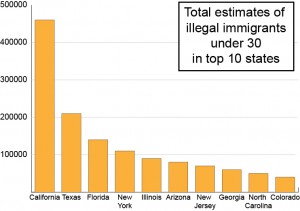Without documents, immigrant students struggle to succeed
|
The bus to the University of California at Los Angeles campus took two hours to travel a distance that would take 20 minutes by car. Sofia Campos took this bus ride twice a day during her first two years of college. As an illegal immigrant born in Lima, Peru, and brought to the U.S. when she was 6 years old, Campos can’t legally obtain a driver’s license. That’s just one of many inconveniences these students face when choosing to attend college. “We pretend when we see a cop pass by that we don’t get scared,” Campos said.

